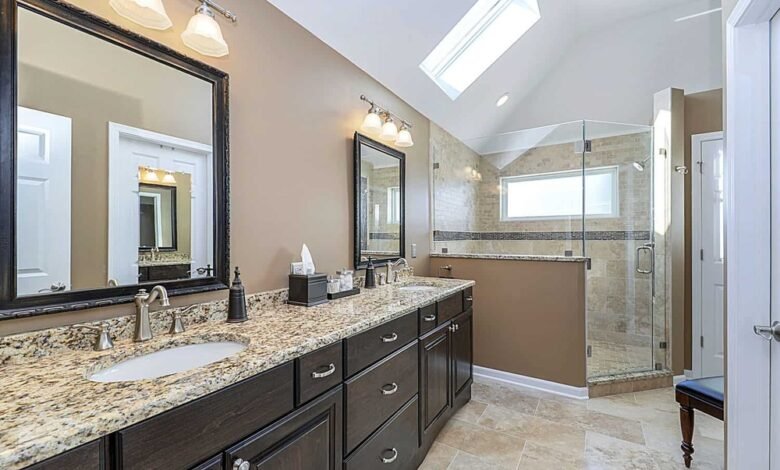
Introduction
Renovating kitchens and bathrooms is no easy feat. These areas are frequently the heart and soul of a home, meeting practical needs while also reflecting personal taste. Homeowners typically envision a visually appealing kitchen or bathroom, but these areas must also function effortlessly for daily use. So, how do kitchen and bath renovation specialists strike this delicate balance of design and functionality?
Understanding the Core of Style vs. Functionality
When we talk about style in home restoration, we mean the design elements that make a room visually appealing. This can include color palettes, textures, finishes, and the overall aesthetic feel. Functionality, on the other hand, refers to how well the place performs its intended purpose—think ease of use, comfort, and practicality.
While it is natural to elevate one over the other, true balance occurs when a place is both visually appealing and functional. This is indicative of a well-executed renovation.
Key Considerations in Kitchen Renovations
Layout: The Foundation of a Functional Kitchen
The kitchen layout is critical to its functionality. Renovation professionals pay close attention to the kitchen’s workflow and frequently employ the “work triangle” concept. This ensures that the sink, stove, and refrigerator are arranged in a way that facilitates cooking and cleaning.
Aesthetic Elements: Cabinets, Countertops, and Backsplash Choices
From sleek, minimalist cabinets to elaborate, textured backsplashes, various features influence the kitchen’s décor. Renovation pros frequently use materials that are both beautiful and lasting. Quartz countertops, for example, provide both beauty and long-term durability.
Ergonomics in Kitchen Design
Ergonomics is an important consideration when designing a practical kitchen. Counter heights, appliance placement, and even the distance between the sink and stove are all taken into consideration to reduce strain and improve usability. Stylish, ergonomic designs are essential for blending form and function.
Smart Storage Solutions
Clutter is the enemy of both style and function. To stay organized and visibly tidy, renovation experts recommend innovative storage choices such as pull-out drawers, hidden cabinets, and multi-functional islands.
Incorporating Functionality Without Compromising Style
Choosing Appliances: Stylish Yet Efficient
Today’s appliances are made to be both aesthetically pleasing and functional. Sleek, stainless steel finishes or hidden appliances can improve the aesthetics of a kitchen while also providing cutting-edge efficiency.
Lighting That Enhances Both Aesthetics and Practicality
Lighting is commonly ignored, but it can make or break a kitchen design. Task lighting for food preparation, ambient lighting for the atmosphere, and accent lighting for style are all necessary. Experts ensure that the lighting is both functional and fashionable, employing fixtures that suit the entire aesthetic.
Flooring: Durability and Design
Flooring must be sturdy enough to sustain heavy use while still adding to the room’s decor. Experts frequently use materials such as hardwood or tile that provide both durability and style.
Balancing Style and Functionality in Bath Renovations
Efficient Use of Space in Small Bathrooms
Bathrooms, particularly smaller ones, are frequently space-constrained. Experts use built-in storage, floating vanities, and stylish compact fixtures to make the most of every square inch.
Modern Fixtures That Offer Both Beauty and Practicality
From rain showers to wall-mounted faucets, today’s fixtures are intended to be both beautiful and functional. Experts select fixtures that provide increased functionality while maintaining the room’s appearance.
Bathroom Storage: Keeping It Clean and Stylish
Storage is essential in bathrooms, particularly in smaller areas. Experts use sophisticated storage solutions such as recessed shelving and floating cabinets to keep the room clutter-free while yet preserving its visual attractiveness.
Choosing Materials That Marry Style and Durability
Countertops: Granite, Quartz, and Their Balance of Form and Function
When choosing countertops for kitchens and bathrooms, experts frequently recommend quartz or granite. These materials are not only visually pleasing, but they also withstand heat, stains, and scratches, making them ideal for high-traffic areas.
Tile Choices for Kitchens and Bathrooms
Tiles add a big stylistic element to a kitchen backsplash or bathroom walls. Ceramic and porcelain tiles offer a wide range of designs and textures while being simple to clean and maintain.
Waterproofing Considerations in Wet Spaces
Wet areas, such as bathrooms and kitchens, require waterproofing. Experts utilize materials that are both waterproof and elegant, assuring durability without losing design.
The Role of Color and Texture
Color Schemes That Enhance Both Style and Usability
Neutral tones, such as whites, grays, and earthy colors, are frequently employed to achieve a serene and timeless atmosphere. Experts utilize color carefully to bring personality without overpowering the environment.
Textures and Finishes That Contribute to a Functional Yet Appealing Design
Experts employ several textures to create depth in a space. Matte coatings, for example, are both stylish and functional because they hide fingerprints and smudges.
Technology Integration for Enhanced Functionality
Smart Kitchen Appliances: Form Meets Function
Technology has transformed kitchen design. Smart appliances not only make life easier, but they also add to the kitchen’s sleek aesthetic. Renovation specialists understand how to smoothly include this cutting-edge technology into the design.
Bathroom Tech: Heated Floors, Smart Mirrors, and More
Bathrooms are also becoming smarter. Heated floors, touchless faucets, and smart mirrors are examples of technology that improves both the functionality and aesthetics of contemporary bathrooms.
Common Mistakes Homeowners Make
Focusing Too Much on Trends Over Timeless Functionality
It’s easy to become caught up in design trends, but experts advise against it. Trendy selections may seem excellent now, but they may not hold up over time in terms of utility or resale value.
Underestimating the Importance of Quality Materials
Choosing low-quality materials to save money usually backfires in the long term. Experts emphasize the value of investing in long-lasting, high-quality materials to ensure both appearance and utility.
Sustainability in Kitchen and Bath Designs
Eco-Friendly Materials That Don’t Sacrifice Aesthetics
In today’s society, sustainability is more than a trend; it is a requirement. Homeowners are increasingly looking for solutions to reduce their environmental footprint without sacrificing style. Fortunately, the market is brimming with eco-friendly materials that combine beauty and utility.
For example, bamboo is an excellent material for flooring and cabinetry. It’s a fast-regenerating material with unique grain patterns that add a decorative touch. Recycled materials, such as glass countertops produced from salvaged glass, not only look great but also help to remove waste from landfills.
Furthermore, low-VOC (volatile organic compound) paints and finishes are critical for preserving air quality while improving aesthetics. These eco-friendly items are available in a variety of colors and finishes, allowing homeowners to create vivid, healthy environments free of dangerous chemicals.
Energy-Efficient Appliances and Fixtures
Energy efficiency is another important aspect of sustainable kitchen and bath designs. Investing in ENERGY STAR-certified equipment can considerably reduce energy use and utility expenditures. These appliances are intended to use less water and power, making them both eco-friendly and cost-effective.
In the bathroom, low-flow faucets and showerheads can save water without losing performance. Smart toilets that consume less water per flush while giving maximum functionality are also becoming popular.
Furthermore, LED lighting fixtures give strong illumination while using less energy than traditional bulbs. Incorporating daylighting solutions, such as wide windows or skylights, can help reduce the demand for artificial lighting, thereby improving sustainability and creating natural beauty.
The Role of Professional Expertise
Why Hiring a Renovation Expert Ensures a Balanced Outcome
Navigating the complexities of kitchen and bathroom renovations can be difficult, particularly when attempting to balance style, functionality, and sustainability. This is when the skills of a professional renovation specialist come into play.
Experts are aware of the most recent materials, technology, and design trends. They may assist homeowners in making informed decisions that are consistent with their vision while taking into account practical factors such as money and environmental effects. Furthermore, their competence guarantees that renovations comply with building laws and regulations, avoiding costly mistakes down the road.
Hiring a professional can help you save time and minimize stress. They handle the logistics of the renovation process, working with builders, suppliers, and inspectors, allowing homeowners to enjoy the transformation of their property.
Case Studies of Successful Renovations
Consider a recent kitchen remodel in which the owners wished to enhance their area while emphasizing sustainability. The expert recommended using recycled glass countertops and bamboo cabinetry. They used energy-efficient equipment and properly placed windows to let in plenty of natural light. The ultimate result was a magnificent, eco-friendly kitchen that not only looked great but also worked efficiently, lowering the homeowner’s carbon footprint.
Another example is a bathroom remodel that focuses on optimizing tiny spaces. The expert proposed a floating vanity constructed of salvaged wood, which not only saves space but also adds elegance. The crew also installed low-flow fixtures and a smart mirror with integrated lighting, resulting in a gorgeous but functional sanctuary that met the homeowner’s needs.
Conclusion
Balancing design and functionality in kitchen and bath renovations is a skill that necessitates careful consideration of many factors. Professionals in the industry use a combination of strategic planning, high-quality materials, and cutting-edge technologies to design environments that are not only visually appealing but also functional and sustainable.
Homeowners should be aware that appearance and functionality are not mutually exclusive. By taking both into account, they may create a harmonious atmosphere that satisfies their needs while also reflecting their particular taste. Investing in professional skills can help make this process go more smoothly, ensuring that every decision contributes to a balanced, beautiful, and sustainable house.



